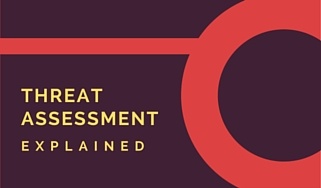
One of the most important elements to the Joffe approach to school safety is our belief that necessary safety improvements are more likely to stick when they are incorporated into the existing foundation of your school’s culture.
I’ve been thinking about the connection between that guiding factor of our school safety programs and something else on the minds of administrators around the country - threat assessment programs. A threat assessment program is about determining a student’s risk to commit violent or dangerous acts by gathering data. It might involve a select group of administrators or otherwise qualified school employees who investigate when say, a teacher reports a distinct behavior and mood shift in a normally engaged student. This sort of preemptive action can save lives.
In the last week, we saw a news story that underscored this. A high school in Texas had three students arrested after they made threats to attack the school, and students reported it to the teacher, who took it to the administration. In the aftermath, officials partially credited their emphatic message to the community of “see something, say something.” Relying on your school's culture and community to protect it is usually an effective way to improve school safety. Data supports this view. In a review of 51 averted school attacks, researchers found that the attempted perpetrators had discussed their plans either in-person or online over half the time. A threat assessment program is keeping your school safer when it provides a well-known place for anonymous individuals to report concerning reports, data, or information. That is, a place for them to say something after they see something.
Frustratingly, many threat assessment programs completely miss the boat when it comes to the final and most important aspect of a good one. Once the threat has been investigated and handled, the student who was under scrutiny is likely to return to school. They cannot do so under a cloud of whispers, gossip, and rumour. It is absolutely your threat assessment program’s responsibility to remove that stigma by re-establishing a connection with a trusted adult, facilitating emotional connections with other students, or some other method. Otherwise, threat assessment has failed at its primary responsibility of protecting students.
 A trusted teacher, counselor, or psychologist may be able to assist a student in re-integrating back into school.
A trusted teacher, counselor, or psychologist may be able to assist a student in re-integrating back into school.
If your school doesn't have a threat assessment program, we encourage you to think through what it might look like in your specific community. If you already have a process for identifying and mitigating potential issues, we hope this or some of our other resources on this page helped further your knowledge and understanding.
For a more in-depth look as to what makes up an effective, holistic threat assessment program, check out our article on the topic here.
For some further reading on the impact going through a threat assessment program can have on a student, check out this excellent story from The Oregonian.

